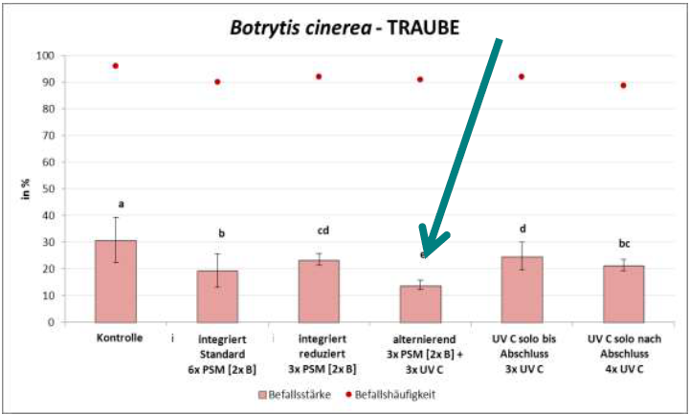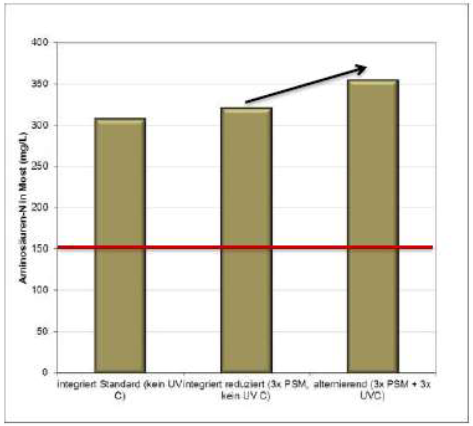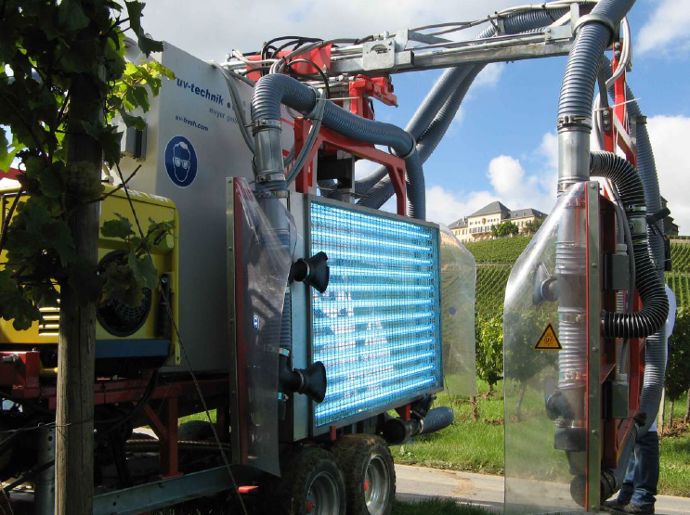Application in vines
A new control approach is intended to help reduce the high proportion of fungicide applications in viticulture. The method is based on treating the target area with UV C rays. To answer the experimental questions, several institutes of the Geisenheim University of Applied Sciences are collaborating with well-known companies, including a market leader for UV C irradiation systems in the food sector. HA Hessen Agentur GmbH acts as project sponsor, which promotes applied research and development projects in the priority program "Hessen ModellProjekte".
Quality-oriented grape production requires intensive plant protection under the climatic conditions prevailing in Central Europe. Compared to other groups of plant protection products, fungicides dominate here. When comparing different crops, viticulture ranks second. The intensive use of plant protection products can be associated with side effects - this applies to both integrated and organic viticulture.
The three main problem areas are:
- undesirable pesticide residues in grapes and wine
- Resistance phenomena on the part of the pests
- the accumulation of the heavy metal copper in the vineyard ecosystem.
The aim of this project is to describe the effects and side effects of a new physical process, to demonstrate the resulting potential savings in fungicides and, on this basis, to develop a new, practical strategy for controlling harmful fungi.
Effect of UV-C
The natural source of UV light (ultraviolet light) is the sun. However, due to absorption in the earth's atmosphere, only UV A and, to a lesser extent, UV B radiation reaches the earth's surface. UV C rays with wavelengths below 280 nm do not occur here. UV C light can be generated artificially by UV low-pressure or UV medium-pressure lamps. The effect of UV C irradiation on microorganisms is based on damage to parts of the deoxyribonucleic acid (DNA). This results in the formation of so-called thymine dimers, which lead to a deformation of the DNA. As a result, important cell functions, including cell division, can no longer function normally. The organism is no longer able to reproduce or even dies. Within the UV-C spectrum, this damage potential is particularly restricted to the wavelength range between 240 and 270 nm (nm = nanometer, 1 cm = 10 million nanometers). The UV-C emitters used in the investigations presented here operate in the 254 nm range, i.e. lie within the optimal window of effect. The individual UV-C effect is dose-dependent. This means that a longer lasting low irradiance of, for example, 10 seconds (s) at 8 milliwatts/cm2 (= 80 mWs/cm2) has the same effect as a short but strong irradiance of 2 s at 40 mW/cm2 (= 80 mWs/cm2).


